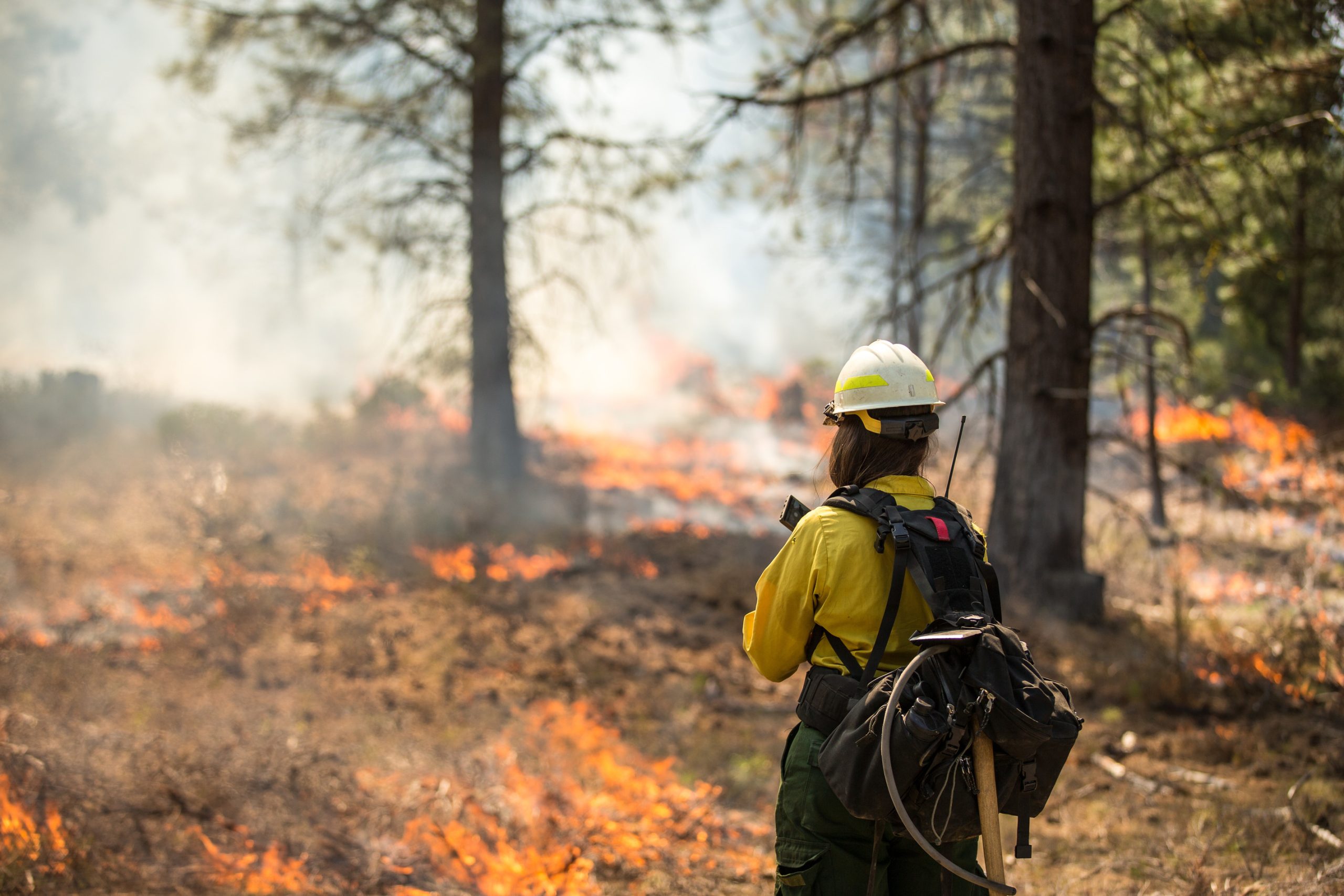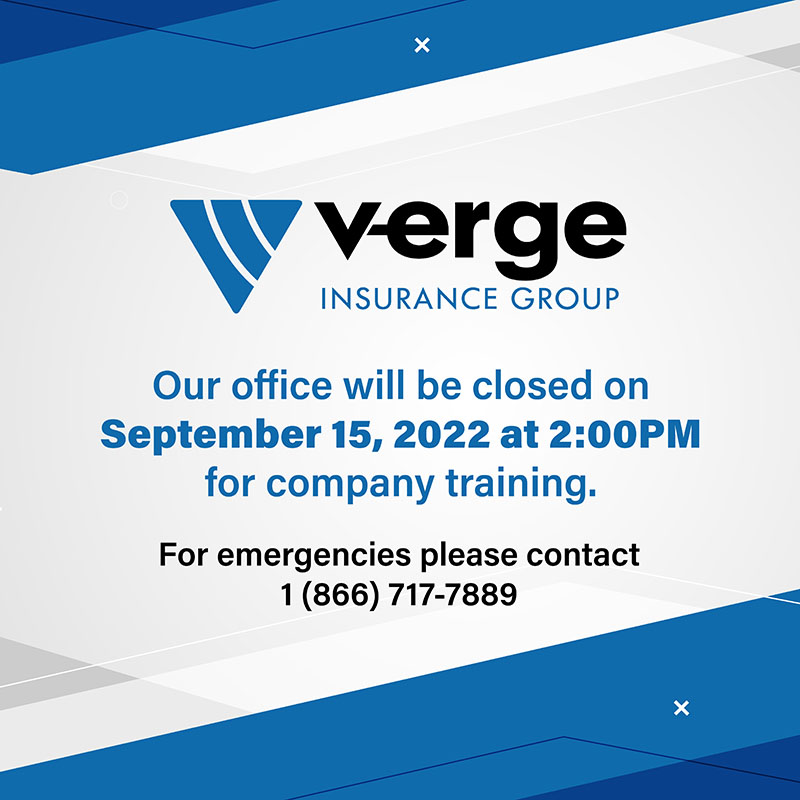
Wildfire Preparedness and Insurance Tips for Canadians
August 16, 2023
In Case of Wildfire
For Canadians, 2020 was a quieter year for wildfires. There were 3,621 wildfires affecting 235,000 hectares as of September 2020. Compare that to the 10-year average of 5,639 fires covering 2,8 million hectares. The national wildfire preparedness remained at level 1, compared to the United States, which was at a level 5, with wildfires extending from California to Washington.
The U.S. Department of the Interior estimates that about 90% of all wildfires are caused by the actions of individuals or companies, not lightning strikes or other natural causes. That means they can be prevented.
If you live in wildfire country, do you know how to reduce your risk? And if a wildfire does occur, are you prepared to navigate a claim?
Confirm your coverage
In all parts of the country, damage caused by fire and smoke from wildfires is covered under standard homeowners, renters and business owners insurance, as well as the comprehensive portion of an auto policy. If firefighters cause water or other damage while protecting your property from a wildfire, that’s also covered.
The cost of your policy will be influenced by the general wildfire conditions of the region where you live, in addition to specific factors tied to your individual address. The top three aspects considered when assessing your home’s risk are:
- The amount of vegetation that a fire could use as fuel
- The grade (or steepness) of your property
- The ease of access firefighters would have in getting their equipment to your home
Review your policy every year and make sure you have adequate coverage limits (the maximum amount the insurance company will pay to replace or repair following a loss). This is especially important if you’ve made upgrades or acquired new possessions.
If you haven’t studied the fine print of your policy yet, confirm with your insurance broker that the following are covered with regard to wildfires:
- Your home, as well as any outbuildings, such as a garage or toolshed — If you live in a condominium, check the lease or bylaws to understand what the condo association covers versus what you are expected to insure.
- Your possessions — In addition to losses from a wildfires, your policy should include theft or vandalism, which can occur with post-wildfire looting.
- Additional living expenses — If your home, apartment or condo becomes uninhabitable after a wildfire, this would cover rent and food until your living space is restored or replaced.
You should also confirm that your auto insurance covers both fire damage and vandalism. These fall under “comprehensive” coverage and are not automatically included in auto policies.
Remember that any amount you recover after a wildfire could hinge on the accuracy of your home inventory.
Here are some tips for creating a home inventory:
- Take pictures or video of your property every year.
- Include a description of each item and an approximate purchase date.
- Thoroughly document any high-end items.
- Store this inventory along with other important household documents off-site, such as with family or in a safe deposit box.
- Secure a digital backup on an off-site server.
Take measures to reduce your risk
The first thing to do is practice good fire safety. Never toss a cigarette out of a car window. Never burn yard debris near structures, especially on windy days or during dry spells. Never leave campfires unattended or smoldering. And never use incendiary devices near woodlands or buildings. Beyond those measures, you can reduce the flammability of your property so a wildfire is less likely to reach or ignite it.
Wildfires need oxygen, heat and fuel to thrive. While there is little you can do to control the first two, you can reduce the amount of vegetation and combustible materials on your property.
Research shows that embers blown by the wind during wildfires cause most of the fires that consume homes. That means your property doesn’t need to be in the direct path of the initial wildfire to be destroyed. In fact, an ember can travel up to one mile in the wind, land on a combustible fuel source and start a new fire.
Fires can also move from the ground into the crowns of trees, which greatly complicates firefighting efforts.
Play zone defence
To reduce your property’s wildfire risk, eliminate as many potential fuel sources as possible. There are some surprisingly simple ways to accomplish this, while other changes require more planning or time to execute.
Homes ignite more or less easily based on their condition and the area up to 200 feet around them. This total area is called the “home ignition zone,” and it is divided into subzones.
Your insurance broker can supply a comprehensive wildfire risk reduction list, but here are some recommendations by zone.
The immediate zone is the home itself and the area 0-5 feet from the furthest exterior point on each side. This is the area that’s most vulnerable to embers and the first you should tackle. Start with the house itself and then address the landscaping.
- Replace or repair any loose or missing shingles or roof tiles.
- Use fire-resistant shingles appropriate to your region.
- Regularly remove dried leaves and pine needles from gutters and eaves.
- Clear debris from roofs, porches and the undersides of decks. Place fine metal mesh or screens around cleaned decks to eliminate the need for future debris removal.
- Install 1/8” metal mesh screening in eave vents to reduce the chance of embers entering.
- Remove debris from exterior attic vents and install 1/8” metal mesh screening.
- Repair or replace damaged or loose window screens.
- Remove any items stored under decks.
- Move flammable materials such as mulch, undergrowth and firewood piles away from wall exteriors.
- Eliminate dense clusters of trees and undergrowth.
The intermediate zone is the area 5-30 feet from the furthest exterior point on each side of the home.
- Eliminate dense clusters of trees and undergrowth. Trees should have a minimum of 18 feet between crowns, with this distance increasing as the property slope increases.
- Remove vegetation under trees to make it more difficult for fire to reach the tops.
- Prune tall trees so the lowest branches are 6-10 feet off the ground.
- Clear any vegetation under stationary propane tanks.
- Keep grass mowed to four inches. In dry conditions, mow less frequently and water grass regularly.
- Strategically place driveways, walkways, and concrete or paver patios to create fuel breaks. This makes it more difficult for a fire to reach your home.
- Install noncombustible fences and decks (metal or composite materials).
- Keep playground equipment and other combustible structures like storage buildings at least 30 feet away from the house. This minimizes opportunities for fire to jump from one structure to the other.
The extended zone is 30-200 feet from the home. The goal in this area is to interrupt paths for the fire and keep flames small and on the ground.
- In the 30- to 60-foot area, eliminate dense clusters of trees, ground litter, debris and undergrowth using the same pruning and spacing methods described above.
- Out to 200 feet, remove and haul away heavy debris or dead plant material. Remove small conifers or trees sprouting between mature trees.
- Keep all vegetation away from outbuildings.
- If there are any trees 30-60 feet from the home, there should be at least 12 feet between canopy tops. If 60-100 feet out, the canopies should be at least 6 feet apart.
If your home is struck by a wildfire
Even if you are not allowed to re-enter your neighborhood to assess the damage, report the wildfire to your insurer as soon as you can. Keep your insurance broker’s contact information or company app on your smartphone or in an accessible file away from your home. Having this information on hand removes an extra step during a stressful time.
At the start of the claim process, you will be asked to complete a “proof of loss” form. This is where your completed home inventory comes in. In addition to a description and approximate purchase date for each item, you may be asked about the cost to replace or repair it. Some claims require a formal repair estimate, while others do not. Your insurance broker can be a helpful resource during this process, so don’t hesitate to ask for their input.
Although it may be tempting to start the cleanup process, do not throw any damaged items away until they can be assessed and included in the claim report. If circumstances require cleanup, simply photograph the item before you dispose of it.
Insurance policies typically have a time limit on filing claims. This varies by province and company. Be sure to ask your insurance broker about time limits.
Some high-value homeowners insurance policies also come with prevention services, like help with transferring fine art and rugs away from areas of imminent danger. While you should take every precaution to protect your home and belongings, remember that your life and your family members’ lives are what’s most important. Heed all evacuation orders with the knowledge that your possessions can be restored or replaced and your insurance will help you recover financially.


